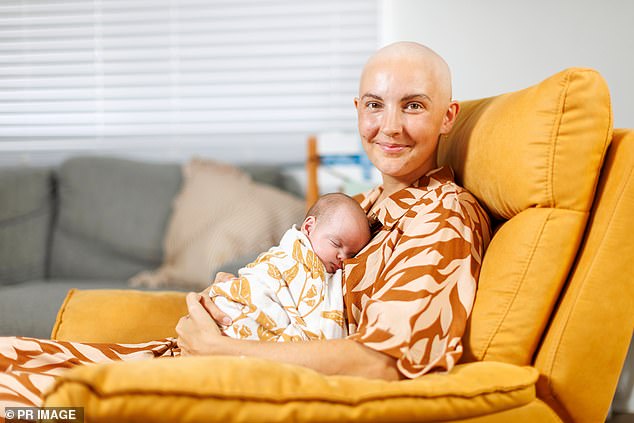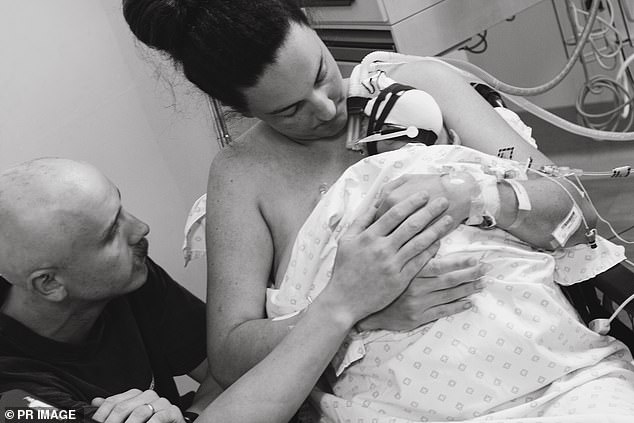A young mother had no idea she had a life-threatening 5kg tumor until a few days before giving birth.
Emily Wiles, 28, was 30 weeks pregnant when she began experiencing cramps that continued to get worse for several weeks.
She went to Brisbane’s Mater Hospital when she was 33 weeks pregnant and had an ultrasound that revealed a devastating diagnosis: a growth on her ovaries.
“We were shocked that there was a tumor growing next to the baby all this time,” said Ms Wiles’ husband Luke.
The best plan of action for the expectant mother was to undergo a cesarean delivery and at the same time undergo surgery to remove the growth.
Doctors then found the staggering 5kg tumor.
Emily Wiles, 28, was 30 weeks pregnant when she began experiencing cramps that continued to get worse for several weeks.
Unfortunately, the growth was of the hypercalcemic type, one of the most dangerous forms of ovarian cancer.
“If I hadn’t been pregnant, I would have associated the symptoms with menstruation – cramps, strange bowel movements – and I find that really scary,” Ms Wiles said.
Fortunately, baby Eli was born safely, albeit seven weeks early.
His premature birth was more of a health problem than growing up with a tumor.
“Cancer rarely affects the baby or crosses the placenta; the biggest risk to the baby in the womb is the mother being unwell,” said Dr Sarah Janssens, of Mater Mothers’ Hospitals.
He weighed 2.3kg and received specialist care in hospital before returning home to adjust to life with his mother, father and brother.
Since giving birth, Mrs Wiles has been undergoing chemotherapy and will receive a stem cell transplant as her doctors “release the book” in her battle against ovarian cancer.
“The evidence we have suggests that very aggressive treatments produce the best patient outcomes and survival,” said Dr. Catherine Shannon, senior medical oncologist at Mater Cancer Care Center.

Emily Wiles and her baby at Brisbane’s Mater Hospital after having a 5kg tumor removed from her ovaries.
Mrs Wiles’s type of ovarian cancer is extremely rare.
Only one in every 10,000 women diagnosed with the disease will have that subtype.
“Ovarian cancer symptoms are similar across all subtypes,” said Dr Rhett Morton, a gynecological oncologist at Mater Hospital Brisbane.
“These are often nonspecific abdominal or pelvic symptoms that may only be noticed when tumor growth has advanced and can often be attributed to other conditions.”
February marks Ovarian Cancer Awareness Month.
Around 1,300 Australian women will be diagnosed with ovarian cancer in 2022.
It is the deadliest gynecological cancer, with a five-year survival rate of 49 percent.
Women who experience common symptoms such as bloating, eating less and feeling fuller, abdominal pain, and bladder problems should see a doctor.


